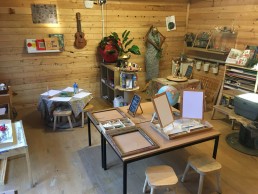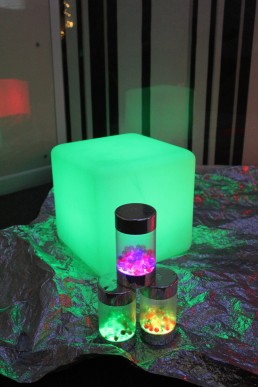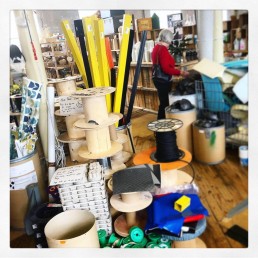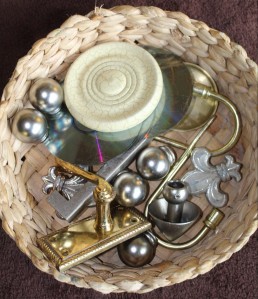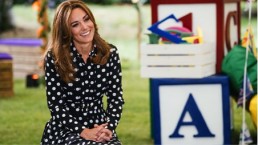The Art Studio
Every morning and afternoon our Pre-Schoolers choose where they want to spend their time, between the Yurt/Outdoor Classroom, Forest School or the Art Studio. There is a quaint pebbled path that leads us behind the Yurt, past the new pond and up to this purpose built creative space, but this isn't just any art classroom, we do things a little differently here. http://simonr30.sg-host.com/the-art-room/
Why do we have an Art Studio?
Of course creativity is woven throughout every aspect of our learning at Inspirations, there are mark making tools, paints and clay accessible in all areas, so why do we need an additional separate creative space? The Art Studio, (referred to as an Atelier in the Reggio culture) is so much more than just an Art Room. It is its own separate space for the children to own, re-purpose and re-visit week after week, and is set out to foster self discovery.
100 Languages of Learning
It is a space for smaller groups of children to branch off, be heard, share ideas, and develop the confidence to be leaders of their own research and learning. It is an environment that plays host to books, materials and tools that support the 100 ways of learning with the support of myself as the Atelierista. It is a space where children proceed through their inquiry to reach their hypothesis though guided experiments, mixed media, play, music, light and shadow, sculpture and dramatic play. A space for them to give meaning to, give identity to, and in turn put them selves and their ideas into context within the world they live in.








The walls of the Art Studio are a canvas, a projector screen, an art exhibition and a metaphorical mirror reflecting the evolving learning journey of our children. Through photos and quotes of the children's voice on the wall the children can see where their ideas started, where they are now, and by reading back the children's own words they see that their inputs are recorded, valued and remembered.
It's also important to note that the Atelierista is not an art teacher, rather, an Artist who knows the potential of art materials and children, and the limitless possibilities when these are combined.




Beautiful Mistakes
In the Art Studio the children are not afraid to try new things, because fear of failure doesn't exist. How can it exist in a place where mistakes are simply learning opportunities. A fallen glue pot can become an art project in its self, and a drawing gone wrong can inspire new ideas. One project that stands out began when a child wiped up spilt watercolour paint from the floor with a baby wipe and watched as the colours soaked through the wipe. He then decided to add baby wipes to a canvas, the 'dirty' baby wipes themselves then becoming the art.
Seekers of Meaning
As constant seekers of meaning, our children are making sense of the world around them with everything they do, and our Art studio is one section of our pre-school that fosters this.
This week we will be filming inside the Art Studio to see their explorations brought to life, this short film will be shared on You Tube next week.
- Nathalie
Pre-School at Adel
Are you longing to peer into the future, catch a glimpse of normality resuming once again? I think we can agree this is going on longer than we initially imagined, but here we are. We are still in this together, and we hope during these times of increased social distancing you can still maintain social connections online, just like those in this news story that brought a smile to our faces. https://www.bbc.co.uk/news/av/uk-55732174
So we start this blog by asking, how are you, and what are you grateful for? We are grateful to have our Inspirations Nurseries families that continue to bring a sense of community.
Last week our blog focused on our Horsforth Pre-School, so this week we hand over to Deborah our manager at Adel to talk about our other Inspirations Nursery only 10 minutes away.
Welcome to Adel
At Adel we take children from the age of three, to starting school. Like Horsforth, we follow the Reggio Emilia Approach, which comprises of loose parts, mirrors and reflection, natural resources and investigation of up-cycled and recycled trinkets and materials.



Our setting is within the grounds of Adel St John the Baptist Primary School which is surrounded by beautiful woods and trees. There’s a well-equipped natural garden with a climbing wall, workbench, piano, mud kitchen and bikes. We have the use of the super large playing field and the conservation area which we use twice weekly for Forest School.
Our planning involves the outdoors as much as indoors and the children can choose where they would like to play.
Inside we have a very spacious room with areas to promote learning wherever the children choose to be.
Set Out to Inspire
The aim of our pre-school environments is to inspire the children to want to explore and learn. We have a maths, literacy, construction, small world, home and creative area of which all have natural resources for the children to explore and a wide range of loose parts to promote maths, communication, imagination and problem solving.



After observing the children’s common interests, we plan as a team to add resources and challenges to the areas and talk to the children about what they know and what they want to know, and how they would like to learn.
The children’s key worker also plans for their key children’s individual interests to support and provide opportunities to progress in all areas of development. As we are a pre-school we encourage independence and all skills necessary for school readiness, such as being able to express their own needs, listen to others and stories, separate from their carer, independent self-care, and understanding of British Values which encourages respect for ourselves and others.
Phonic, Spanish and Creativity
We teach phonics which is differentiated to meet and challenge each child’s individual ability. At Adel we also introduce Spanish to the children; an introduction to languages through songs, games and activities promoting enthusiasm with learning languages later in school. We also have our own Atelierista who comes in 3 times a week to deepen creative projects in smaller groups.

Throughout both our Pre-School settings we support your children in becoming strong independent learners, enabling them to think critically and outside the box. Their use of imagination and their understanding of the world, alongside their ability to problem solve, will stand them out from the crowd and give them a head start in life.
If you love our nursery as much as we do, have any questions or are interested in joining us check out more on the website here-http://simonr30.sg-host.com/our-settings/adel/ or contact- deborah@inspirationsnurseries.co.uk
Let's Save The Planet

The difficulties faced globally over the past year make it easier to forget the hot topics of the year before. Looking back over the end of 2019 and beginning of 2020 and remembering the pictures of those red-hot raging fires across Australia, of animals desperately trying to escape the flames, family homes burning and men and women fighting through the smoke and heat futilely trying to combat the flames. It all seems such a long time ago and, in some ways, no longer imposes on us the horror they once did.
The World Has Changed
A pandemic has hit and, in many ways, has made the fires seem further away, maybe not so important, and impactful on our conscience as they once were.
In this distance between one global disaster and another, we have hopefully managed to enjoy, at times, a slower pace of life, we have had the enjoyment of our gardens, our local nature reserve, woodland, park or beach. We have clung to our outdoor spaces seeking the peace, tranquillity and escapism that being outdoors offers us. We have in a sense returned to nature and for many it has soothed troubled souls and helped those many people struggling with their mental health.

You may also have watched the new David Attenborough series EXTINCTION. Within the series he suggests we are currently in what will be the sixth mass extinction of planet Earth with a million species at risk. Our biodiversity is in crisis and he goes so far to say that this lack of biodiversity will, in the future cause more major pandemics and disease amongst the human race.
It is all very overwhelming, daunting, and somewhat scary if you think too deeply or for too long. However, burying our head in the sand will not save our planet. We must do what we can, all we can.
Here at Inspirations, we are naturally, through our ethos of outside learning, Forest school and loose parts play, inspiring our children to appreciate our natural environment, forging a love of nature with a deep-seated respect, and understanding for it. They, with our support and commitment to their futures will turn this all around. They are the generation who will aspire to and ultimately achieve a purely ‘green’ way of living. It is a challenge Children of Inspirations will be well equipped to meet! Read more about our culture and ethos here- http://simonr30.sg-host.com/our-culture/
As parents of the future generation
Like all households and businesses, Inspirations are struggling to maintain our promises to reduce single use items, the pandemic has seen an end to that for now. It does therefore become even more important to do what we can in other areas, like composting, shopping local, not buying plastic covered fruit and veg, walking or cycling where we can. Lots of little things, if we are all joining in, help to make a big difference. They the baby steps we, the parents of the future generation, can do to make it possible for them to take the giant leaps required to save the planet.



2020 is almost over and as we say goodbye to the year that has taught us so much about what is important, I fervently hope and pray that 2021 is happier, healthier and of course more sustainable…
-Nicola
BBC iPlayer - Extinction: The Facts
Learning through Light
The Reggio approach (as outlined in our previous blog) puts children at the centre of their own learning. The ethos is based around a hands on approach to learning, with art, materials, and loose parts used to create learning opportunities and encourage critical thinking; but one thing we haven't touched upon much is the use of light as a material.
If you explore our rooms at inspirations, or the photography on our Instagram and website you will see there are projectors, light boxes, and sensory dark dens throughout all of our spaces from the Baby Rooms up to Pre-School.

Why do we use light and shadow?
In the younger rooms the use of light cubes, fairy lights and projectors invite children to expand their natural curiosity and encourage babies to engage and remain focused for a longer period of time. As well as having a calming affect, this sensory experience also provides a different perspective, allowing the child to develop creative and critical thinking.

In the Toddler and Pre-School rooms we use over head projectors, torches and mirrors to allow the children to deepen their knowledge and understanding of light and space. Have you ever witnessed the first time a child acknowledged their own shadow?
Seeing their reaction just highlights the sense of magic and wonder that comes with light play. In the Reggio Approach we talk about natural objects a lot, and sun light alone is a completely free resource that should be utilised to support learning. Light and shadow can be a source of intrigue as children notice the way in which light changes the way things look. It gives the child the opportunity to witness the illumination of things around them, predict patterns, test their ideas and develop new concepts.
We set up a camera in our baby rooms to see how they interact with light, you can watch the video here-
At home why not set up an activity for your child based around lights, shadows or reflection using mirrors, we would love to be tagged in a photo of your activity on tapestry, Instagram or Facebook.
“light and certain light phenomena are central protagonists and highlight the extent to which expressiveness and beauty can accompany an understanding of scientific thinking.” - Vecci (Reggio Atelierista)



For more reading on this topic you can find 'Art and Creativity in Reggio Emilia: Exploring the Role and Potential of Ateliers in Early Childhood Education (Contesting Early Childhood)DF' on amazon.
- Nathalie (Atelierista)
The Reggio Emilia Approach
At Inspirations Nurseries and Forest School we follow the Reggio Approach to learning, but what's the back story, what are the circumstances that led to this approach being created?
Following the devastation of World War Two, Reggio Emilia and its neighbouring Italian cities were left war torn. The war left merely a foundation upon which to rebuild a town and a community from scratch, a place free from oppression, injustice and inequality. This brought together a community of people passionate to form a new educational system with the very little they had; with the aim of turning their future generations into capable, resourceful and resilient individuals.
Local men and women of all ages came together to create a school for young children using materials from bombed out buildings. So from the very beginning these Reggio Emilia children were shown that something can be made from nothing, that creativity, perseverance and determination leads to opportunities and possibilities, and that anything can be made from the materials naturally surrounding us.
At inspirations we immerse ourselves and our children in this resourceful and passionate mind set, we too are a community that learn together, explore boundaries and strive to reach our full potential together.
http://simonr30.sg-host.com/news-and-blog/loose-parts/
As described in our previous blog, loose parts are a huge part of the Reggio Approach but there are many other aspect that guide our environment, planning and learning opportunities here at our Horsforth and Adel settings.


'The Real Thing'
Instead of plastic play food, cups and jugs in the mud kitchen and home corners we use real fruit and veg, real plates and utensils. There are so many more learning opportunities that come from using real up cycled natural resources, they can peel, cut, weigh and smell real fruit and vegetables, and real pot and pan will also teach the children the value of an object. They are more likely to handle real objects with care, value and precision than with a light plastic alternative.
The role of our educators is to listen to the children, to be present, challenge their ideas, and extend when learning opportunities arise. This brings us back to the importance of community within our setting, we as educators are here to be present with the children and to create learning opportunities in their environment for them to discover the answers them selves. When a child has the opportunity to discover the world independently, and learn answers through trial and error with the support of our educators and natural resources they grow up as capable, creative and resourceful humans, just like the inspiring people who came together to create the first Reggio Emilia Schools from the ground up.
‘We must credit the child with enormous potential and the children must feel that trust. The teacher must give up all his preconceived notions and accept the child and a co- constructor’ –Loris Malaguzzi

Our Horsforth Setting is located next to Hunger Hill Woods on West End Lane, to get in touch email kayleigh@inspirationsnurseries.co.uk
Our Adel Setting is located next to St John the Baptist Primary, to get in touch email deborah@inspirationsnurseries.co.uk
- Nathalie (Atelierista)
Something Out of Nothing
‘In any environment, both the degree of inventiveness and creativity, and the possibility of discovery, are directly proportional to the number and kind of variables in it.” - Simon Nicholson
 As the changing seasons are constantly providing us with natural loose parts, at Inspirations we are constantly adding to our materials and resources, reinventing the classroom and replenishing our supplies. We are always on the look out for cable reels, pallets and tyres locally to ensure our environment is a constant source of stimulation. SCRAP (Scrap Creative Reuse Arts Project Ltd) is one place in particular that provides us with many open ended resources, and this week was time for another haul.
As the changing seasons are constantly providing us with natural loose parts, at Inspirations we are constantly adding to our materials and resources, reinventing the classroom and replenishing our supplies. We are always on the look out for cable reels, pallets and tyres locally to ensure our environment is a constant source of stimulation. SCRAP (Scrap Creative Reuse Arts Project Ltd) is one place in particular that provides us with many open ended resources, and this week was time for another haul.
Since 2004 SCRAP has been a social enterprise based in a creative space at Sunnybank Mills, Farsley, Leeds, and if you haven't been we thoroughly recommend it.
Want to know more about our nursery? Call 0113 2585800
Viewing Objects in a New Light
There's something about walking into SCRAP that ignites our imaginations regardless of age. Being surrounded by so many types of materials sparks joy and opens up a feeling of endless possibilities, it invites you to see the magic in objects that would otherwise be discarded. Scrap is a place that encourages us to view old objects in a new light, and it is exactly what we aim to do at Inspirations Nurseries.
It was Simon Nicholson who developed the theory of loose parts in 1971, he proposed that open ended materials could empower young children creatively, and that the presence of such materials and objects inspire children to construct, manipulate and transform through self directed play. The idea of loose parts goes far deeper when we consider it being combined with additional sources such as gravity, music, light and shadow which we will look into further as we move our focus to include the Reggio Emilia approach as a whole.

 Here are some of the items we got from SCRAP this week, which have been implemented into each room. This week we will be recording ways in which our children use some of these items in play and how they adapt them for construction, art projects and role play. We will share this footage on our Youtube and social media accounts so stay tuned.
Here are some of the items we got from SCRAP this week, which have been implemented into each room. This week we will be recording ways in which our children use some of these items in play and how they adapt them for construction, art projects and role play. We will share this footage on our Youtube and social media accounts so stay tuned.
There's something very inspiring seeing how children can make something out of 'nothing', and this is a reminder that people of all ages need to allow time and space to make connections between all the little things that our larger ideas are built from.
- Nathalie
 Scrap is open to the public Weds - Sat, and includes a reSTORE eco friendly refill store. Please ensure you are wearing a face mask due to the current restrictions or you can buy one there from a selection of handmade reusable materials.
Scrap is open to the public Weds - Sat, and includes a reSTORE eco friendly refill store. Please ensure you are wearing a face mask due to the current restrictions or you can buy one there from a selection of handmade reusable materials.
For more information about our nurseries call us on:
Adel: 0113 2612262
Horsforth: 0113 258 5800
Loose Parts
Why do we use loose parts?
Loose parts are a significant segment of our ethos at Inspirations Nurseries. Before moving away from conventional toys, we did a lot of research into the benefits of using loose parts. Several education pedagogies use loose parts. Reggio Emilia and loose parts complement each other well; we use both at Inspirations. Both philosophies support open ended play using natural resources, imagination, and creativity. When children are given opportunities to engage in free play with little adult direction, they are able to explore freely with creativity and expression, because there are no limitations or expectations.

What are Loose Parts?
Loose parts are open ended materials that can be moved around, designed, and redesigned. They create opportunities to use our imaginations and discover new ideas. Conventional toys are fixed for the one purpose they were made for, whereas loose parts are open ended and can be used for a variety of things. A plastic car can only be a car. A stick could be a magic wand or a person or you could use a number of them to make a house… the possibilities are endless. Ask any parent how long their children will play with the cardboard box a toy comes in on their birthdays. Loose parts can be found anywhere. How many of us remember going to the beach and collecting shells and stones and making patterns with them? You can find loose parts in the house, in the garden or on a walk. Loose parts include both manufactured and natural resources. These can include stones, pinecones, rings, balls, blocks, boxes, leaves and even nuts and bolts.


Endless Possibilities
For outdoor play, we provide a variety of large loose parts such as tyres of different sizes, milk crates, planks of wood, cable reels etc. In our baby rooms, we use a variety of loose parts to support schemas; we use things like curtain rings to hang on mug trees, balls to post through holes, tyres to encourage rolling. Toddlers can then use slightly smaller loose parts such as pebbles to create patterns and smaller wood slices for counting. Preschool are able to use more intricate loose parts such as beads, small tiles and items they find on forest school.
The founder of the Reggio Emilia Philosophy said...
“Children need the freedom to appreciate the infinite resources of their hands, their eyes and their ears, the resources of forms, materials, sounds and colours”.
-Kayleigh
See loose parts in action in our Pre-School room here- https://youtu.be/Nngfh6Uj-yw
All photos from Inspirations Nursery
Tiny Happy People
The Duchess of Cambridge is once again shouting out for children in their early years by supporting the BBC’s Tiny Happy People programme.
The BBC website offers suggested activities and play ideas for babies and toddlers with an aim of enhancing their language and communication skills. With the tag line: ‘Your words build their world’
Here at Inspirations we understand the importance of children’s communication development. If a child has a deep knowledge of words and language, they are better enabled to understand the world around them. We support our youngest children through songs and rhymes which is a brilliant way to engage young children in the rhythms and tone of speech. We have a ‘Babies Can Sign’ specialist in weekly to teach the educators and children sign language. Sign language is a visual aid (so are pictures in books etc) which enhances a child’s understanding of words before they are even able to talk! This gives them a head start in understanding words and their meaning. Reading books with a supportive adult and using the pictures as a tool to support understanding is also a vital in developing a child’s communication skills.
We also ensure that we make eye contact when talking to children, at a level where the child can see your face clearly, this allows the child to gain an understanding of nonverbal communication, it gives the child the ability to understand the emotions behind the words and also the way the mouth shapes make the different sounds. Eye contact and close physical contact for babies and toddlers is also essential for them to feel safe and secure. Humans don’t learn, if they are feeling insecure or unsafe. Maybe this is why baby wearing has taken off in such a big way in recent years.
Our ethos of ‘enabling environments’ and the offering of a variety of different activities including messy play, singing and signing, water play, light and shadow exploration and of course our outdoor areas, (which gives the children the experiences of different weather types), when supported by a vocal caring adult expands and enhances each child’s exposure to new vocabulary, intonation and rhythm of speech.
For further information on the Duchess of Cambridge’s collaboration with the BBC please and also some fantastic activity ideas for you to do with your child, follow the link to the website. https://www.bbc.co.uk/tiny-happy-people
Inclusion, Diversity and Equality
 British society is filled with colourful diversity, a rainbow of religions, cultures, languages, foods, festivals, music and celebrations all witnessed on streets around the United Kingdom. We are truly privileged to live in such a diverse and colourful environment.Read more
British society is filled with colourful diversity, a rainbow of religions, cultures, languages, foods, festivals, music and celebrations all witnessed on streets around the United Kingdom. We are truly privileged to live in such a diverse and colourful environment.Read more
WORLD BOOK DAY 5TH MARCH 2020
WORLD BOOK DAY
This great event seems to come round more quickly every year! This year however Inspirations are pulling out all the stops and taking part in the ‘Share a Million Stories’ month-long challenge. The event will see our setting challenge our children from babies right through to our school ready children to read and record as many books in a month as possible.
A Decline in Reading Books for Leisure
 Reading books for leisure has greatly declined over the years with electronic devices taking precedence which is a real shame as reading can be such a special and magical moment, particularly when sharing with our young children. In a 2017 edition of Psychologies Today magazine it was noted that ‘reading to babies leads to stronger vocabularies and better early literacy skills four years later, just as the children are getting ready to go to school.
Reading books for leisure has greatly declined over the years with electronic devices taking precedence which is a real shame as reading can be such a special and magical moment, particularly when sharing with our young children. In a 2017 edition of Psychologies Today magazine it was noted that ‘reading to babies leads to stronger vocabularies and better early literacy skills four years later, just as the children are getting ready to go to school.
Why Books are so Important
 Did you know that reading with small babies is important for a child’s language development and literacy skills? The rhythms and patterns of reading gives young babies the starting point in learning to speak their language and enables them to, even at their young age, copy and mimic those rhythms in their own babbled speech. As our children grow their early exposure to books helps sustain their love and interest in books which in turn enhances their imaginations, allows them to explore the world, particularly scary emotions or aspects of life that they may in the ‘real world’ find difficult to comprehend or discuss.
Did you know that reading with small babies is important for a child’s language development and literacy skills? The rhythms and patterns of reading gives young babies the starting point in learning to speak their language and enables them to, even at their young age, copy and mimic those rhythms in their own babbled speech. As our children grow their early exposure to books helps sustain their love and interest in books which in turn enhances their imaginations, allows them to explore the world, particularly scary emotions or aspects of life that they may in the ‘real world’ find difficult to comprehend or discuss.
Inspirations Top Tips for Reading at Home with Children
• Its always nice to snuggle down with a good book, create a warm cosy space and sit down with your little one and share the experience
• For babies and young toddlers, the words on the page don’t really matter, discuss the pictures, the colours, characters emotions and refer to similar experiences you have had with them.
• Ask older children open ended questions like, what do you think is happening? What could happen next? What would you do if...?
 • Props are a great addition to a story, if you are reading a book about a teddy bear, use one of your child’s bears to play the part in the story.
• Props are a great addition to a story, if you are reading a book about a teddy bear, use one of your child’s bears to play the part in the story.
• If you really want to go ‘all out’ make each character in the book have a different voice, this really brings the story alive in the imagination of children!
• It’s also good to remember that non-fiction books are equally important. If you have been for a walk and seen frogspawn in a pond, go to your local library and borrow a fact book about the life cycle of frogs.
Over the years when I’ve been introduced into a new setting and have wanted to build relationships with those young children, sitting in the book corner and picking up a book works every time! Children love to be read to so let’s start a reading revolution and see if we can encourage children of all ages to enter the magical world of books!
Nicola
